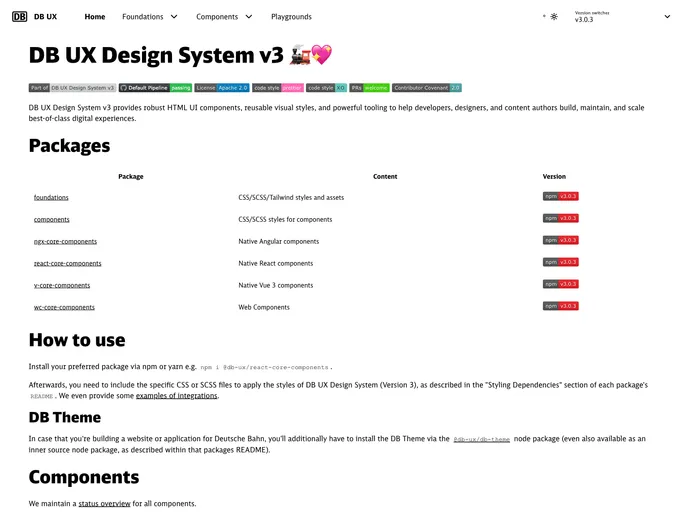Overview
The DB UX Design System v3 is an impressive toolkit designed for developers, designers, and content authors aiming to craft exceptional digital experiences. It provides a comprehensive framework consisting of reusable UI components and visual styles that enhance functionality while maintaining a consistent user experience. With its adherence to best practices such as semantic HTML and ARIA roles, this design system ensures accessibility and usability across all interfaces.
This version marks a significant advancement by offering a variety of packages, making it versatile for different frameworks like Angular, React, and Vue. Whether you’re building a new project or revamping an existing one, DB UX Design System v3 aids in maintaining design consistency and speeding up the development process.
Features
Robust Component Library: Offers a rich set of HTML UI components that can be easily integrated into various applications, ensuring consistency and enhancing usability.
Multiple Framework Support: Includes native components for Angular, React, and Vue, allowing developers to choose the best tools for their projects without compromising on design.
CSS/SCSS/Tailwind Compatibility: Provides styles across different formats, making it adaptable to your project’s existing architecture and preferences.
DB Theme Integration: Specifically designed for applications related to Deutsche Bahn, ensuring that branding and design requirements are met effortlessly.
Accessibility-Focused Design: Leverages semantic HTML and ARIA roles to enforce accessibility best practices, making it easier for all users to navigate and interact.
Version Control with NPM Packages: Each component and style can be managed via npm, promoting efficient updates and maintenance.
Quality Assurance Processes: The system undergoes regular quality checks in collaboration with expert teams, ensuring that the components are reliable and up to standard.
Comprehensive Documentation: Detailed README files and styling dependencies guide users through the installation and integration processes, facilitating a smooth setup.
